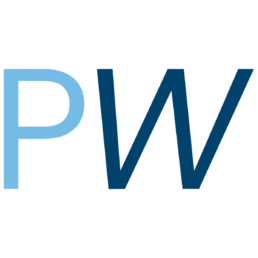Why You Should Look Into Physio Massage Therapy in Perth?
Massage or Soft Tissue Manipulation is a very popular Manual Therapy technique that involves creating pressure, stimulation, stretching and promoting movement to various parts of the body. When done by an accredited professional (such as a physiotherapist), a massage can be a viable complementary treatment to certain physical, chemical and emotional conditions.
Even though massage therapy has been around since ancient Egypt and has remained one of the most popular treatments recommended by health professionals, it is important to look further into what the research suggests. This allows healthcare professionals to utilize this treatment better.
A summary of evidence based research done by the Australian Association of Massage Therapy revealed that there is evidence to suggest that massage can help with:
- Nausea & vomiting (acupressure shown to be most effective)
- Low back pain
- Stress
- Anxiety
- Promoting well being & relaxation
- Delayed-onset muscle soreness (DOMS)
- Managing well being and emotional states in those with terminal diseases
A Perth Physiotherapist‘s Perspective
As a Physiotherapist, I firmly believe that it is important to note that while massage in itself is a good intervention, often times it has to be done in conjunction with other physiotherapy treatment for best results. That being said, massage therapy is proven to be safe when done by qualified professionals that follow safe practice principles. It is always important to discuss with your healthcare professional to determine if massage therapy may assist with your current condition.
As massage therapy is widespread and popular across many cultures – there are huge variations in techniques which are all unique in producing different physiological effects on the human body:
It is important to consider getting the “right” kind of massage therapy to suit your needs.
By Physiotherapist Wayne Sun
If you require massage therapy to assist you, feel free to contact us at (08) 9321 1964
References
MOYER CA, ROUNDS J, & HANNUM JW. (2004). A meta-analysis of massage therapy research. Psychological Bulletin. 130, 3-18.
CORBIN L. (2005). Safety and efficacy of massage therapy for patients with cancer. Cancer Control : Journal of the Moffitt Cancer Center. 12, 158-64.
LEE A, & DONE ML. (1999). The use of nonpharmacologic techniques to prevent postoperative nausea and vomiting: a meta-analysis. Anesthesia and Analgesia. 88, 1362-9.
FREELS, D. L., & COGGINS, M. (2000). Acupressure at the Neiguan P6 Point for Treating Nausea and Vomiting in Early Pregnancy: An Evaluation of the Literature. MOTHER BABY JOURNAL. 5, 17-22.
HELMREICH, R. J., SHIAO, S.-Y. P. K., & DUNE, L. S. (2006). Meta-analysis of Acustimulation Effects on Nausea and Vomiting in Pregnant Women. Explore: The Journal of Science and Healing. 2, 412-421.
MYERS CD, WALTON T, & SMALL BJ. (2008). The value of massage therapy in cancer care. Hematology/Oncology Clinics of North America. 22, 649-60.
JENNIE C. I. TSAO. (2007). Effectiveness of Massage Therapy for Chronic, Non-Malignant Pain: A Review. Evidence-Based Complementary and Alternative Medicine
CHERKIN DC, SHERMAN KJ, DEYO RA, & SHEKELLE PG. (2003). A review of the evidence for the effectiveness, safety, and cost of acupuncture, massage therapy, and spinal manipulation for back pain. Annals of Internal Medicine. 138, 898-906.
SHIAO, S.-Y. P. K., & DUNE, L. S. (2006). Metaanalyses of Acustimulations: Effects on Nausea and Vomiting in Postoperative Adult Patients. Explore: The Journal of Science and Healing. 2, 202-215.
Related Posts
Neck and Shoulder Pain in Children
27 June 2016
Working adults often experience the all too familiar neck and shoulder pain which comes after a period of high stress and long hours of work. We often attribute this to sitting too long as well as poor lifestyle and ergonomic factors that may place stress on our joints, muscles, nerves and mental…
0 Comments7 Minutes
How Chiropractors Help Athletes Pt. 1
17 October 2016
Sports Chiropractic provides care in the conservative management, rehabilitation or optimization of the neuromuscular system for the athlete to recover from injury and/or better performance. In Australia, sports chiropractic has been established for over 30 years.
0 Comments3 Minutes


